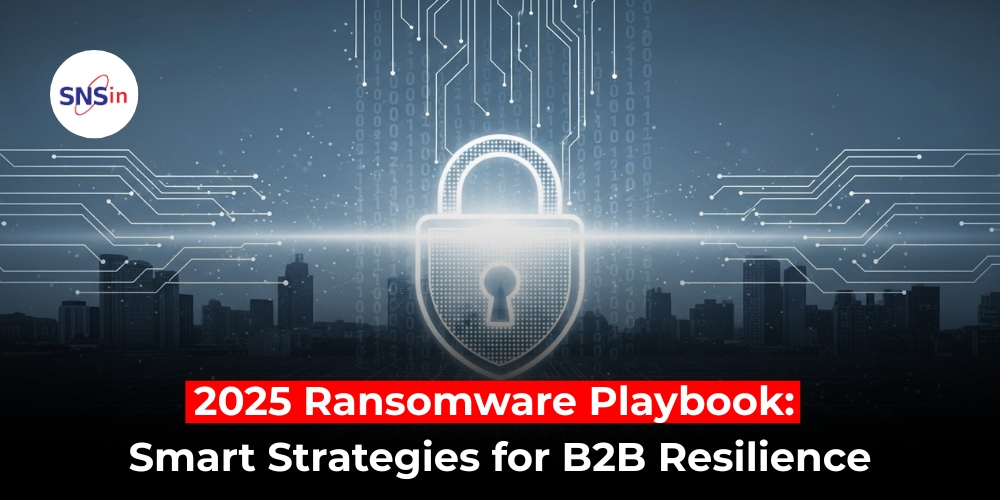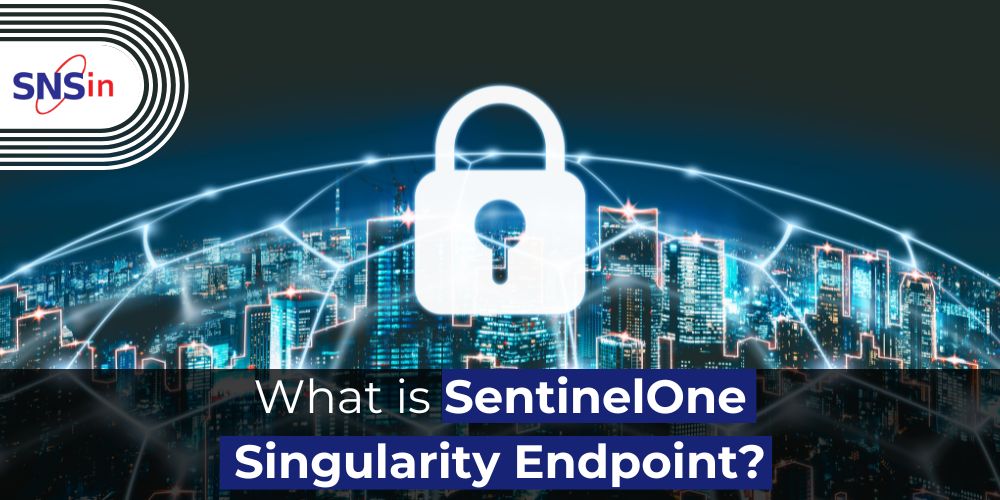Picture this:
It’s a regular Wednesday morning.
Your team’s prepping for a crucial client call. Slide decks are ready, servers humming, Zoom links shared. Suddenly—your finance dashboard freezes. Then HR files vanish. Emails won’t load. A message pops up on every screen:
“Your files have been encrypted. Pay 3.5 Bitcoin within 72 hours or lose everything.”
Panic ensues. The CTO looks pale. The sales head mutters something unprintable. And in that moment, you realize:
You weren’t ready.
But here’s the thing — you could’ve been.
Ransomware in 2025: Smarter, Faster, Ruthless:
Gone are the days when ransomware was about clumsy email attachments with broken English. In 2025, it’s sleek, multilingual, AI-enhanced — and it’s targeting B2B firms with laser focus.
Here’s why you should be worried:
- Global ransomware damages are projected to hit $265 billion in 2025.
- Over 72% of ransomware attacks now target B2B sectors like SaaS, healthcare, logistics, and manufacturing.
- Attack dwell time has shrunk to as little as 45 minutes from initial breach to file encryption.
In short: It’s not if your business is targeted — it’s when.
The Evolution of Ransomware Tactics:
Modern ransomware gangs don’t just lock your files — they exfiltrate data, threaten exposure, and negotiate like Wall Street brokers. Here’s what’s new in the 2025 playbook:
- Double Extortion: Pay once to unlock, pay again to stop public leaks.
- Triple Extortion: Add threats to notify your clients and regulators.
- Ransomware-as-a-Service (RaaS): Sophisticated kits for rent to low-level attackers.
- AI Phishing: Spear-phishing emails now use GPT-like tools to mimic your CEO’s tone.
It’s the Uberization of cybercrime.
Your 2025 B2B Ransomware Playbook
Now, for the good news. Defending yourself isn’t rocket science — it’s just strategy, execution, and culture. Here’s how to build your resilience:
1. Assume Breach, Plan Backwards:
The mindset shift is simple: Don’t focus only on prevention. Focus on survival.
“Cyber resilience is not about building walls. It’s about preparing for the storm inside.”
— Nicole Perlroth, Cybersecurity Author
Every B2B business should map out:
- What systems will be most valuable in an attack?
- What data is most vulnerable or damaging if leaked?
- What’s the worst-case scenario — and how fast can you bounce back?
This reverse planning shapes smart defense.
2. Segmentation Is Your Lifeline:
Ransomware thrives on lateral movement — spreading across endpoints like digital wildfire.
Don’t let it.
Break your network into micro-segments: finance, HR, dev, ops — each with strict access rules.
Even if one device is hit, you prevent a full-system collapse.
3. Automated Backups = Survival Insurance:
It’s 2025. If you don’t have immutable, air-gapped backups, you’re basically waving a white flag.
- Backup daily, test weekly.
- Store offline and in multiple locations.
- Encrypt your backups — attackers go for them first.
Bonus tip: Consider decentralized storage systems like IPFS for added security and redundancy.
4. Zero Trust Isn’t Optional Anymore:
Forget VPNs. Forget firewalls.
In 2025, attackers log in — they don’t break in.
That’s why Zero Trust Architecture matters:
- Never trust. Always verify.
- Enforce multi-factor authentication (MFA) across all apps.
- Monitor behavior patterns and flag anomalies in real-time.
Companies implementing Zero Trust saw 50% lower breach costs.
Source: IBM Cost of a Data Breach Report
5. Invest in an Autonomous SOC:
Human teams can’t detect & respond fast enough anymore.
An Autonomous SOC (Security Operations Center), powered by AI, can:
- Spot ransomware behavior patterns in seconds
- Isolate infected devices before spread
- Auto-initiate playbooks to stop the attack
It’s Iron Man for your cybersecurity.
6. Employee Training That Doesn’t Suck:
Phishing is still the #1 entry point. And guess what?
Over 94% of ransomware attacks begin with a human click.
Source: Verizon Data Breach Investigations Report
So make training:
- Regular (quarterly, not yearly)
- Interactive (gamified > slide decks)
- Realistic (use real bait simulations)
No one remembers a boring compliance video. But they’ll remember almost clicking a fake CEO email.
7. Know When to Call in Pros:
Cyberattacks aren’t just IT issues. They’re PR, legal, operational, and existential crises. So:
- Pre-sign with a cybersecurity incident response team
- Have a law firm experienced in cyber extortion
- Create templates for breach notification (clients, partners, regulators)
And for the love of uptime — get cyber insurance.
What to Include in Your Ransomware Response Plan:
- Chain of command (who leads what)
- Contact list (internal + external vendors)
- Communication protocol (what to tell who)
- Restoration timeline and priorities
- Legal & compliance checklist
- Post-mortem review process
Test it like a fire drill. Don’t wait until you’re under attack to learn who forgot to update the contact list.
Should You Ever Pay the Ransom?:
Short answer? Don’t.
Longer answer? It’s complicated.
- Paying doesn’t guarantee decryption.
- You may get hit again.
- It could violate regulations (hello, OFAC sanctions).
But if you must pay, do it through professionals and keep regulators in the loop.
In 2024, only 8% of paying companies recovered all their data.
Source: Sophos State of Ransomware Report
Final Thoughts: Don’t Be the Headline:
In a hyperconnected B2B world, ransomware doesn’t just cost money — it shatters trust.
Your clients, vendors, and stakeholders expect not perfection, but preparation.
So build smart. Plan ahead. Train often. Automate wisely.
Because when ransomware knocks, your resilience is your reputation.
How SNS India Can Help:
At SNS India, we help B2B organizations across sectors:
- Implement Zero Trust security
- Deploy autonomous threat response systems
- Conduct ransomware preparedness drills
- Build cyber incident playbooks customized to your industry
Let’s make sure your business doesn’t just survive 2025 — it thrives through it. Give us an email right away at [email protected] and get your company cyber audited.
Author
NK Mehta
![]()




